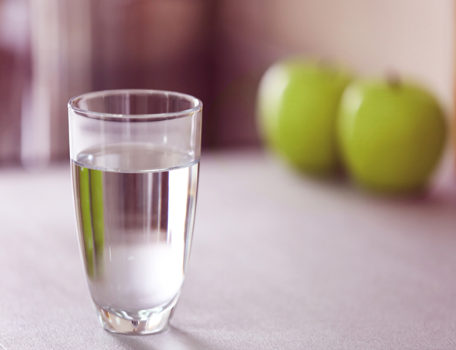How to Test Your Drinking Water to Make Sure it’s Safe: A Helpful Guide
 There’s no doubt that drinking water is necessary for optimal health. In fact, experts recommend that you drink approximately eight half a gallon of water every day.
There’s no doubt that drinking water is necessary for optimal health. In fact, experts recommend that you drink approximately eight half a gallon of water every day.
However, if there are dangerous substances in your water, it could possibly do more harm than good. How do you know if the water you’re drinking is safe?
The answer is to test it!
Doing so is easier than you think. Here’s how to test your drinking water and some of the things you’ll want to look out for.
Common Contaminants In Drinking Water
Before we discuss how to conduct a water safety test, it’s helpful to understand the types of contaminants you’ll want to look out for. Here are a few of the most common:
• Iron – causes the water to have an orange or yellow in color. Water with iron may stain laundry and will also have a bitter taste.
• Sulfur – this may occur naturally or may be caused by bacteria. It creates a distinctive “rotten egg” smell.
• Manganese – causes water to have a purple or black color. Water with manganese may stain and will also have a bitter taste.
• Lead – this is a neurotoxin that is very dangerous to consume. It can be caused by old brass plumbing or leaded solder.
• Calcium carbonate (salt) – this is what causes “hard water”
• “Nuisance” bacteria – this isn’t harmful but can release sulfur and iron into the water and may also form a biofilm on well surfaces.
• Disease-causing bacteria – this may include coliform, fecal coliform, E.coli, and fecal streptococci. Any of these can make you very ill.
Any of these contaminants can create inconveniences at the least and serious sickness in the worst-case scenario.
How to Test Your Drinking Water: Three Different Options
It’s clear to see the advantages of ensuring that your drinking water is free of dangerous compounds! Here are the three easiest and most effective ways to test your drinking water.
1. Do Your Research
When trying to find out whether your drinking water is safe, the first step is to do your research. First, be aware that your water agency is required by the United States Environmental Protection Agency to provide you with an annual report that lists out all of the contaminants found in your drinking water and any health risks they may pose.
This report is called the “Consumer Confidence Report.” It will usually come with your bill, or, if you pay online, you should be able to access it as a downloadable PDF document. If you haven’t received it, you should be able to get it from your utility company’s website.
Not sure where to find it? Give them a call and ask!
You can also call the Environmental Working Group’s (EWG) National Drinking Water Database. If you go to this website, you can simply search by your zip code and get the information you’re looking for.
When reviewing these reports, it’s important to understand that many unregulated chemicals are included, so they may appear more concerning at first glance. It’s a good idea to keep an eye on the “legal limit” and “healthy limit” columns. If the numbers on the report are close to both of these, then there may be a reason for concern.
2. Use An At-Home Test
You can easily buy at-home testing kits either at your local home store or online. In most cases, they include a package of strips that allow you to test for various contaminants in the water.
Unfortunately, there are a few concerns with this. First, they’re not very accurate. Secondly, they don’t test for all contaminants. While an at-home test may give you an indication that you have a problem you need to research further, it’s not advisable to rely on this.
3. Check With The Pros
If you’re concerned about the safety of your drinking water, your best bet is to have it professionally tested. You can find a state-certified laboratory by calling the Safe Drinking Water Hotline at 800-426-4791 or visiting the Environmental Protection Agency (EPA)’s Drinking Water Laboratory Network page.
When you call the laboratory of your choice to request a drinking water test, they will provide you with instructions. In most cases, they will provide you with their own sampling container and tell you exactly how to collect and send in your sample.
Check Your Water Regularly
Note that even if your tap water test shows that your drinking water is safe, it’s still a good idea to check it at least once a year. If you have reason to believe something could have caused contamination, for example, if your backflow prevention device has malfunctioned, then it’s a good idea to have the water re-tested before drinking it.
It’s also a good idea to use a high-quality water filter for your drinking water in-between testing. This will help to remove potentially dangerous contaminants and will make your water taste better. It’s a small investment that’s well worth it to ensure your health.
Get The Peace Of Mind You Need Today!
Now that you know how to test your drinking water, you’ll never have to wonder: “Is my tap water safe to drink?” Knowing this answer for sure will give you the peace of mind you’ve been looking for.
Want even more great advice to help you with your day-to-day life? Take a few minutes to browse through more of our blog posts. We cover everything from cleaning and organizing to travel and entertainment and more!